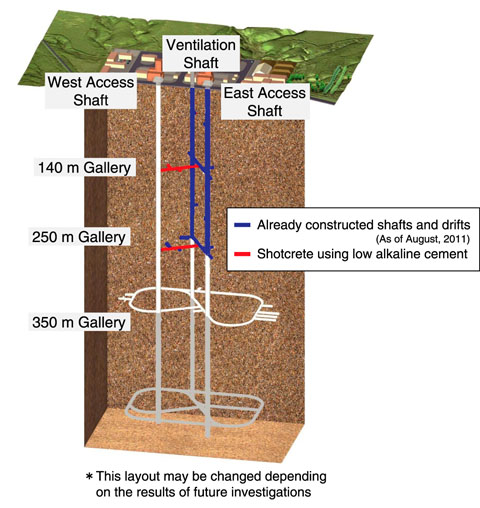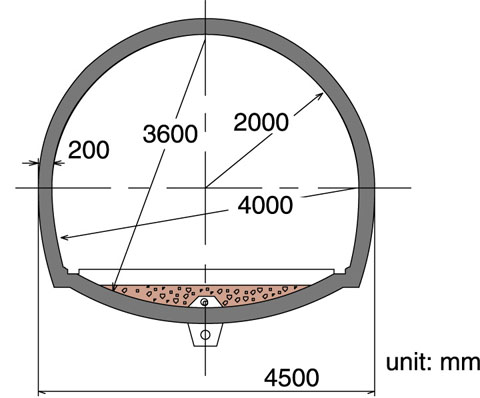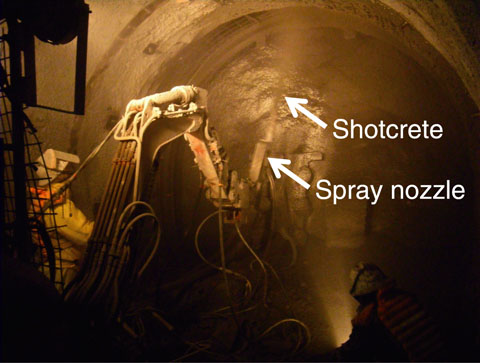
Fig.2-21 Layout of the Horonobe URL

Fig.2-22 Typical cross section of the galleries

Fig.2-23 Spraying HFSC shotcrete in the drift
In Japan, high-level radioactive waste repositories are to be constructed at a depth of more than 300 m below the surface. Shotcrete and lining will be used in the construction to ensure safety during the construction and operational periods. Concrete, a composite alkaline material, is composed of aggregate, cement, and additives. Low-alkaline cement has been developed for achieving long-term stability of the barrier systems that may be adversely affected by the alkaline arising from high-alkaline cement material. JAEA has developed a type of low-alkaline cement named HFSC (highly fly-ash contained silica-fume cement). HFSC contains silica-fume and coal ash (about 60% in weight).
JAEA is now constructing an underground research laboratory (URL) at Horonobe for the purpose of research on deep geological science and repository engineering technology (Fig.2-21). As an in situ experiment, HFSC was used as shotcrete in the construction of 140 m and 250 m galleries in the URL (Fig.2-22 and Fig.2-23). The aim of this in situ experiment was to assess the performance of HFSC shotcrete in terms of mechanics, workability, durability, and so on. The workability of HFSC was evaluated by comparing it with the workability of ordinary Portland cement (OPC). The experiment results confirmed that the strength of HFSC shotcrete with local aggregates was greater than the design strength and that the workability of HFSC shotcrete was equivalent to that of OPC shotcrete. Further, it was shown that HFSC shotcrete could be used to construct a drift in the underground facility. There are some types of low-alkaline cement, and these have been used in a few small-scale field experiments. However, HFSC is the only low-alkaline cement that has been used in a full-scale field experiment in the world.
Next, the influence of HFSC and OPC on groundwater and rock will be evaluated by sampling water and core from the drift wall. HFSC shotcrete would be used in the construction of a gallery constructed at a depth of than 250 m, and the effect of the HFSC on the change in geological features such as the increase of initial rock stress and salinity of groundwater according to the depth would be investigated. HFSC will be used in construction not only as shotcrete but also as the concrete for constructing the segmental liner concrete in shafts. The effectiveness of using HFSC concrete in deep underground construction and the effect of HFSC shotcrete and/or lining on geological features will be evaluated.